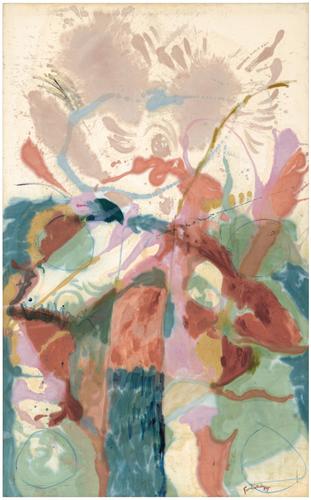Various soft expressive colors filled Helen Frankenthaler’s painting entitled ‘Jacob’s Ladder’. In some sections, the colors seem almost transparent. The fluidity on her painting suggests a vitality.
Although the title is ‘Jacob’s Ladder’, this painting remains abstract painting with non-representational character. There is a rectangular shape from the bottom to the center of the canvas, but it is a loose shape, rather than a realistic ladder. Seeing Frankenthaler’s painting is entering the subtle and complex inner world of humans.
Helen Frankenthaler is an American painter in the 20th century. She is the inventor of ‘soak-stain’ technique that paves the way for Colour Field Painting in the 1950s. She stains canvas with thinned pigments and used unprimed canvas, so the colors can soak into the canvas, not only stick on the surface. Frankenthaler is also inspired by Jackson Pollock’s technique to paints by dropping paint to the canvas that is laid on the floor.
The title of ‘Jacob’s Ladder’ refers to the biblical narrative in the Old Testament Book of Genesis. Jacob has a dream about a ladder that connects the earth to heaven. In that dream, God appears and gives blessing to Jacob and his descendants.
Frankenthaler does not have an intention to create representational artwork in ‘Jacob’s Ladder’painting. The shape of rectangular figure emerges during she is working on it and reminds her of the biblical story of Jacob’s Ladder.
The significance of Frankenthaler’s work is to remind us to pause for a while from routines activities and free our minds from any boundaries. This importance does not apart from, as Clement Greenberg–an visual art critic says, the primary aim of abstract painting project to present the non-objective and pure image, without intervention of literary and narrative. Of course, we can ask further, whether possible to present image without language, narrative, and discourse elements, since we always interpret painting through language. Nonetheless, the ability to induces raw emotion and psychological impact of painting remains one of the non-figurative art’s powers.
‘Jacob’s Ladder’: A Non-figurative Painting by Helen Frankenthaler

